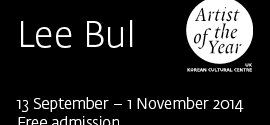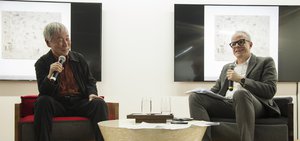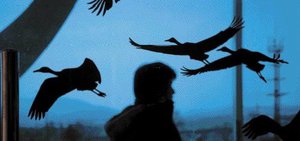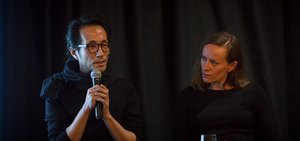LEE BUL: THE CURATORS' TALK

KCC-Artist of the Year: Lee Bul
KCC-Artist of the Year:Lee Bul
13 September ~1 November, 2014
Meet the Curators, Oct 20 (Mon), 7pm
Mami Kataoka (Chief Curator, Mori Museum, Tokyo)
Jonathan Watkins (Director, Ikon Gallery, Birmingham)
Sook-Kyung Lee (Curator, Tate Research Centre)
Venue: Korean Cultural Centre UK
Booking Essential: info@kccuk.org.uk
This is a chance to hear the curators of important retrospectives of Lee Bul in recent years. Mami Kataoka from Mori Museum and Jonathan Watkins from Ikon gallery will offer their unique insights into the works of Lee Bul. This talk will be moderated by Sook-Kyung Lee, curator of Tate Research Centre.
The Condition of Sculpture
Spanning more than 20 years, Lee Bul's practice is much more diverse than the "Cyborg" sculptures that she is probably best known for. This is why her first UK solo show at Ikon gallery in Birmingham is a must-see exhibition whose judicious survey of early drawings, studies, sculptural pieces and ambitious installations will tell us why Lee Bul is one of the most important artists of her generation. In fact, the exhibition at Ikon gallery is part of a world-wide tour of her Retrospective that marks an important chapter in her artistic trajectory. Having evolved and transformed into something unique along its journey, this retrospective began at the Mori Art Center in Tokyo (2012) travelling to the Art Sonje Centre in Seoul (2012) and MUDAM in Luxembourg (2014) before arriving at Ikon this September.
To coincide with the Ikon gallery's exhibition, the Korean Cultural Centre UK will present Lee Bul's ambitious architectural installation Diluvium (2014), a variation of the Diluvium that was first presented in 2012. It was comprised of a set of wooden segments constructed on steel platforms. While it is designed to accommodate uneven assemblages, most of time it has been presented as uneven flooring. For instance, when it was presented at the Art Sonje Centre, along with numerous drawings and models that were accumulated over a 20 year period, its functionality as an architectural element created different viewing positions which superseded its aesthetic value as a piece of sculpture. As these wooden platforms are inherently uneven and at differing heights and gradients, walking upon them required both concentration and caution. Therefore to navigate the piece is as if the artist has invited the audience on a pilgrimage through her maverick artistic journey. When the visitor wanted to take a closer look at the models and drawings hung on the rear end of the exhibition space they had to consider their route and so place some effort into arriving at the intended point.
However, for the KCCUK’s installation of Diluvium (2014), apart from the 5 scale models, the maquettes and drawings in the last room of the exhibition space, what awaits the visitor is the self-referential, solid blocks of sculptures. Thus, the visitor embarks on a journey that appears without a final destination. Despite the fact that the visitor is still invited to walk upon these segments, its leveling is not to provide different viewing positions for other works of art. Some of the blocks of wooden segments are perpendicularly lifted up, in so doing they are refusing to remain as a supportive architectural element. Yet, this does not mean that these sculptures claim themselves to be an autonomous work of art detached from the conditions, context and history of the very space they inhabit.
By being covered with mirror-effect vinyl, the distinction between the space surrounding these Diluvium sculptures and the sculptures themselves becomes blurred. Due to the nature of the vinyl material itself, especially its thinness or flexibility compared to the infinity mirrors that were often used in Lee Bul's previous architectural installations, the surface condition of the exhibition space is revealed as it is. What was conceived as a seamless, white-cube space now fails to conceal its real, bumpy texture due to the layers of paint on the walls that have built up over time. Instead of creating a dizzying fragmentation of reflected images, this mirror-effect vinyl rarely creates clear feedback for the visitor, instead presenting a rough outline of what is reflected. This lack of depth returns the visitor's attention to the very materiality that these sculptural blocks inhabit. By facing the materiality of this sculptural environment, what the audience ultimately experiences is not the site-specifically installed sculptures, but instead the entire exhibition site becoming a set of solid blocks of sculptures.
At the end of the exhibition space, the artist shows the maquette of Via Negativa (2012) which will be presented in full size at IKON gallery thus conceptually linking the two venues together. However, unlike Via Negativa that creates a labyrinth of infinity mirrors, Diluvium (2014) at the KCCUK does not provide fictional paths created by the endless reflection of the mirrors. Instead, it reveals the very moment when a work of art emerges, whether one wishes to call it as a sculpture or a painting.
Je Yun Moon, Curator, KCCUK




